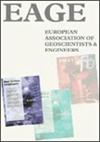在“El Bosque”文艺复兴花园评估大坝对池塘的稳定性(西班牙,bassimjar)
IF 1.6
4区 地球科学
Q3 GEOCHEMISTRY & GEOPHYSICS
引用次数: 0
摘要
位于西班牙萨拉曼卡的“El Bosque”的文艺复兴植物园在其西部呈现出一个由水坝包围的池塘。后者由两个由扶壁相互连接的砖石墙组成。两者之间的立方空间填充了可变粒度的材料(粉砂),允许有限的水流。近年来,大坝的南部经历了局部和随机的下沉,危及了部分花园的入口。为了重新获得通道,必须对下沉的起源、程度和相关性做出适当而可靠的诊断。在这方面,我们已经在坝区进行了微重力调查,以确定填充物分布异常的地方,以便预测进一步下沉或潜在塌陷的地区。这种高分辨率重力测量所需的精确定位(2毫米分辨率)和精确地形校正(每1.5米点)是通过远程驾驶飞机创建详细的数字地形模型(厘米分辨率)实现的。此外,我们执行三个电电阻率层析成像(ERT)概要文件在不同级别的花园:我在大坝本身),2)对大坝的脚和并行(5米以下,∼17米W),和3)有点远,而且平行于坝(8米以下,∼27 m的W)。ERT资料确定了高导电性在分辨率和确定路径,降雨和池塘的水渗流遵循在大坝及其地下,由花岗岩形成的。地球物理研究与沉没材料的岩土分析相结合。研究得出的结论是,大坝填充物中最薄的部分(即淤泥)正在被冲走,留下的是密度和稳定性都较低的沙子,容易坍塌。因此,观测到的下沉与土壤管道有关,即与土壤内部侵蚀和压实问题有关,这些问题迫使土壤材料在几何上和体积上重新调整。本文章由计算机程序翻译,如有差异,请以英文原文为准。
Assessing the dam's stability of the pond at the ‘El Bosque’ renaissance garden (Béjar, Spain)
The renaissance botanical garden of ‘El Bosque’ in Béjar (Salamanca, Spain) presents a pond bounded by a dam in its western part. The latter is formed by two masonry walls interconnected by buttresses. Cubic spaces in between are filled with a variable grain-size material (silty sand) that allows limited water flow. In recent years the southern part of the dam has experienced localized and random subsidence that jeopardizes the entrance to part of the garden. To regain access, a proper and reliable diagnosis of the origin, magnitude and relevance of the subsidence must be made. In this regard, we have undertaken a microgravity survey in the dam area to identify places with an anomalous distribution of the filling material in order to foresee further sinking or potential collapsing areas. The precise positioning (2 mm resolution) and accurate terrain correction needed in this kind of high-resolution gravity surveys (points every 1.5 m) was achieved by creating a detailed Digital Terrain Model (cm resolution) with a remotely piloted aircraft. In addition, we performed three electric resistivity tomography (ERT) profiles at different levels of the garden: i) on the dam itself, ii) right on the foot of the dam and parallel to it (5 m below and ∼17m to the W), and iii) a bit farther, but also parallel to the dam (8 m below and ∼27m to the W). The ERT profiles identified high conductivity in water-saturated areas and determined the paths that rainfall and pond's seepage water follow in the dam and its underground, formed by granites. The geophysical studies were paired with geotechnical analyses of the sunk materials. The study concluded that the thinnest fraction of the dam's filling material (i.e., silts) is being washed away, leaving behind sand with less density and stability, susceptible to collapse. Thus, the observed sinking is related to soil piping, i.e. to soil internal erosion and compaction issues that force the soil material to re-adjust geometrically and volumetrically.
求助全文
通过发布文献求助,成功后即可免费获取论文全文。
去求助
来源期刊

Near Surface Geophysics
地学-地球化学与地球物理
CiteScore
3.60
自引率
12.50%
发文量
42
审稿时长
6-12 weeks
期刊介绍:
Near Surface Geophysics is an international journal for the publication of research and development in geophysics applied to near surface. It places emphasis on geological, hydrogeological, geotechnical, environmental, engineering, mining, archaeological, agricultural and other applications of geophysics as well as physical soil and rock properties. Geophysical and geoscientific case histories with innovative use of geophysical techniques are welcome, which may include improvements on instrumentation, measurements, data acquisition and processing, modelling, inversion, interpretation, project management and multidisciplinary use. The papers should also be understandable to those who use geophysical data but are not necessarily geophysicists.
 求助内容:
求助内容: 应助结果提醒方式:
应助结果提醒方式:


